Afghanistan: The past is not another country
Afghanistan is a place where the past, present and future intertwine.

At Kabul’s airport, immigration is swift and without incident. Soon we are on airport road, a massive 8-lane thoroughfare leading to the heart of the city.
Initially, the security is not as ubiquitous as one would expect, but it is certainly imposing, complete with Humvees, automatic rifles and spiffy uniforms. Though my host is able to, I cannot tell the difference between the local police and the army.
The number of bullet-proof Land Cruisers without number plates — shiny new models, all — on the streets is slightly disconcerting. As we get closer to the green zone of the city, the security increases dramatically. We go through what is called the ‘Ring of Steel’ — an immaculate security cordon thrown around the green zone. Here, in and around the Wazir Akbar Khan area, are located all the major embassies, the ISAF headquarters and, of course, the presidential palace. You do not get a view of these buildings, but you can guess, without your host politely informing you, that they are here, given the ISAF soldiers on guard and on watchtowers along concrete walls. It is around this area that a militant attack will take place a few days from our arrival — a brazen takeover of an under-construction building from where attacks were launched on the US Embassy. The question of how the attackers got through that ‘Ring of Steel’, past those Humvees and automatic rifles and spiffy uniforms, remains unanswered.
We are to stay close to Shahrah-e-Now park, once known for its cinemas and bustling cultural activities. It is coming back to life, I am told, and the high-rise buildings in the area, many under construction, are proof. Shahrah-e-Now park is close to the embassies and when the attack happens, we can see US attack helicopters zoom overhead. For a first-time visitor, it is surprising and, truth be told, almost exciting, but not so much for the staff at the place where we are staying. They seem more concerned about flipping through channels in an attempt to listen to some good music, as if that would drown out the choppers’ buzzing.
But that was later. On my first night there, my host and I go for dinner to a Lebanese restaurant. The entrance is a fortified metal door. When we knock, a peephole opens and we are observed by someone on the inside before the door opens and we are led to a small ‘buffer room’ area, and body-searched. This is the procedure followed at all upscale eateries we visit during our time in Kabul. Finally, we go through another metal door, which opens into the restaurant.
I feel as if I’ve stepped inside a vineyard: wild grapes grow in the open-aired space where the tables are set. It is beautiful and, like most places I will visit in Afghanistan, particularly Kabul, has amazing flora. Roses grow wild, as do cherry blossoms, pomegranate and cherry trees — a totally different sight from the Afghanistan of rocky landscapes and rugged mountains we see on our television screens. Just visit Bagh-e-Babur in Kabul where the first Mughal Emperor Babur is buried.
Completely destroyed during the civil war between the mujahideen, the Bagh-e-Babur was redone from scratch by the Aga Khan Foundation. When we visit, it is slightly overcast, but the clouds let enough sun through for the Bagh to glow — the place looks heavenly. There is a cool breeze and roses, fruit trees and a typically Mughal water channel flourish in lush green gardens. At the top of the gardens is Babur’s tomb; beside him rest a few of his family members. The white marble of some of the graves has been pierced by wild cherry blossom trees. Before his death, Babur had requested to be buried here. Initially buried in India, his body was later moved to the resting place of his choice — a place that he had originally built as a resting garden for himself.
Babur’s epitaph reads in Persian: Gar Firdaus ru-e zamin ast, hamin ast-o hamin ast-o hamin ast. “If there is a paradise on earth, it is this, it is this, it is this.”
Back at the Lebanese restaurant, the crowd is good, it being a Thursday night. Plenty of Americans. You can tell they are American by their accent. They’re all contractors, I am told, a word that has become ominous in Pakistan after the Raymond Davis incident. They work for private construction companies. They all look like ex-marines to me, I say. Or perhaps that’s just the Pakistani in me talking.
Most of the places we visited — places that have immaculate, steeply priced menus, some complete with wine-lists — are patronised by many Americans, most of whom look like ‘contractors’. One can’t help but wonder what will happen to these places once the goras are gone. The food is good. As good as anything you’ll get at upscale eateries in Karachi, Islamabad or Lahore. It is however a lot more expensive. One Afghani is equal to about two Pakistani rupees. And in Afghanistan, you can pay in American dollars, too. Neat.
The first night we are there, I notice an inordinate number of portraits in the city of Ahmed Shah Masood, a former mujahideen commander who found himself at loggerheads with fellow fighters of the Afghan-Soviet war — a group that would eventually call themselves the Taliban. Masood, known as the Lion of Panjshir, a province north of Kabul and rich in gems, was the Taliban’s foremost enemy. He was known in the West as the man who won the Soviet Jihad and would go on to serve as the Defence Minister in the 1992 government of President Burhanuddin Rabbani, Afghanistan’s top peace maker, who was recently killed by a purported Taliban turban-bomber. That night marked 10 years since Masood’s assassination, which took place two days before 9/11. After years of resisting the Taliban, Masood was killed by two men who had come to interview him posing as journalists. The bomb was in the camera. The Algerian journalists were al Qaeda/Taliban supporters, it was said.
The support for Masood is widespread and seemingly unanimous. The man who was vilified for years under the Taliban is celebrated as a national hero, his portrait hung on all the squares of the city, and even plastered on cars. Where were all these people when the Taliban were in power just a few years ago? We call it an early night, as we have to travel up north towards Mazar-e-Sharif by road. We will leave at dawn.
Mazar is located in northern Afghanistan, about an eight-hour drive from Kabul, if you don’t make stops. It is a historic city, which gets its name from the mazar that is believed to have been Hazrat Ali (RA)’s resting place. The story goes that his followers believed that his resting place would be desecrated by his enemies, of which there were many. So his followers took his body on a white camel towards Afghanistan and buried him once they could go no further. The Mazar is huge, the blue-and-white structure elaborate and beautiful. It houses a plethora of white doves. At the mosque beside it, Shias and Sunnis can pray together. Hands tied, hands by their side.
The drive up north is breathtaking. We travel though rugged mountains, past ravines and lush green plains. Even past a US military base, one that is already massive but has more construction still going on. Floating high above the base is a white blimp, a mini Zeppelin, of sorts. It has a number of cameras attached to it so it can monitor vast expanses around it. The blimp is a hallmark of all American bases in Afghanistan. They can be seen in Kabul, too.
Along the way, we go through a number of tunnels in the mountains, built by the Russians during the time they were influential in Afghanistan. These roads were used to get from the mountainous areas that bordered the former Soviet Central Asian republics into central Afghanistan. One of these tunnels is the massive Salang Tunnel, still a marvel of modern engineering. It is a 2.6 kilometre tunnel running through a mountain and has built-in ventilation shafts so that travellers do not die of asphyxiation. Built in 1964, the tunnel is so strategic that it cuts travel time from the north of Afghanistan to its centre, including the capital of Kabul, by days, not just hours. The tunnel was targeted by Afghan mujahideen a number of times to ambush Russian army convoys. Later, Ahmed Shah Masood and his fleeing supporters tried to destroy the tunnel to stop the upward advance of the Taliban. The explosives used rendered the tunnel almost un-travelable for vehicles, and journeys through it had to be made on foot, with a high chance of death by suffocation. Ironically enough, it was Russian engineers who moved to rebuild it after the US invasion of Afghanistan in 2001.
After a night in Mazar, we travel further up north to Aqcha, a town that has been adopted by Turkey. Aqcha, the home of the world famous hand-knotted Afghan carpets, is in Jowzjan, a province that borders the Central Asian state of Turkmenistan and a little bit of Uzbekistan. We are to stay there for a night, our host a former close aide, and current die-hard supporter, of Gen. (retd) Abdul Rashid Dostum — another famous name from the great Soviet Jihad and the subsequent civil war. It is said that President Najibullah, who was the premier of Afghanistan when the Soviet Jihad peaked, was ultimately pushed over the edge after Gen. Dostum, then his ally, defected. Najibullah was ultimately brutally murdered by the Taliban, his body hanged in a public square in Kabul. Some tales have it that Pakistan’s Gen. Naseerullah Babar, dubbed the creator of the Taliban, personally flew from Islamabad to Kabul to shoot Najibullah in the head, given the former president’s obdurate resistance to Pakistan’s growing influence in Afghanistan.
Stories such as these are probably the reason that Afghans aren’t very fond of Pakistanis. Our elderly host defends the decisions of Gen. Dostum, who is also currently in President Karzai’s government, saying that Najibullah wanted to kill Dostum because the general no longer supported the president’s faltering and murderous regime.
While in Aqcha, we live with stereotypical Afghans. They are elaborately gracious hosts. Sitting on beautifully woven carpets on a veranda in an open-air compound, we are fed to the hilt. Our host understands, but cannot speak, Urdu. I can understand, but cannot speak, Dari (Afghani Persian). But a fascinating conversation ensues, with help from my companion. While there, we are joined by a friend of our host in Aqcha for dinner. In the middle of our Urdu-Dari conversation, the guest asks me “Aap Pakistan mein kahaan rehtay hain?”
“Karachi,” I reply.
“Ah. Mein kaafi saal Sohrab Goth mein raha hoon. Meri wahan kabab ki dukaan thi,” he says, excitedly.
“Joh al Asif mein hai?”
“Haan, wohi! Ab meray rishtadaar chalatein hain.”
Eventually, we sleep on the same veranda. The night is clear. It is a full moon and stars fill the sky. Breakfast is served right after Fajr namaz. It is about 5 am.
We bid adieu to our host and go on to Shebarghan, which is known for its massive oil and gas reserves. The only plants that still stand there are the ones built by the Russians back in the day. The reserve they tap is the same as the one of oil and gas rich Central Asian states, known as the Amu Darya Basin — the river area, it is said, Babur had crossed centuries earlier, fleeing with a handful of supporters from his native Ferghana Valley, only to later form one of the most famous empires of history, the Mughal Empire. The hotly debated TAPI (Turkmenistan-Afghanistan-Pakistan-India) gas pipeline, which is to carry through it some 3 billion cubic feet per day of natural gas, will pass in or around this area. It will be a sort of symbolic bringing together of regions that were previously the haunt of Babur.
Though they had been spotted sporadically along the drive from Kabul, most of the tank and armoured personnel carrier (APC) relics lie here. These relics are remnants of the Afghan Jihad, the advancing military convoys that the Mujahideen routed in the war. There are hundreds of them, some burnt, others intact but hollowed. Their serial numbers, in Russian, are still decipherable. They have still not been picked up despite the passage of decades, perhaps because the Afghans were too busy with their infighting. Even if the effort was made, it would be a massive undertaking to move these behemoths, hundreds in number, from the fields. I am told that it is, by law, illegal to move them. They belong to the Afghan interior ministry now. Strangely enough, development and life, and even agriculture, have gone on around these relics, these graveyards of the USSR’s military ambitions. On the road, newer tanks and APCs, those belonging to ISAF, patrol the roads — particularly those leading to Balkh city — an area that we would stop at on the way back south to Kabul.
Balkh city is believed to be one of the oldest in the world. Some estimates date it back to 4,000BC. You can still make out some old structures and stupas. The city was home to Buddhists, the home of Zoroastrianism (whose adherents we call Parsis), and even came under Greek rule. It is also the hometown of the world’s most famous sufi saint Jalaluddin Rumi as well as of celebrated ‘Muslim scientist’ Ibn Sina (Avicenna). Rumi and his family are said to have fled the area for modern day Turkey. Rumi’s hometown is patrolled by ISAF forces, Swedes as we could tell from the flags on the columns of massive patrolling APCs. They had to be Nordic, since the gunman on top of the patrolling vehicles was waving at locals and wearing a big smile.
The reason for the heavy presence of ISAF here, I am told, is because of pockets of resistance by Taliban elements. Fundos in Rumi’s hometown, how ironic.
But then that’s the gist of visiting Afghanistan for the first time. It is puzzling and mindboggling.
Back in Kabul after a 3-day road journey, we stop at Le Atmosphere — a popular foreign haunt, the crowd once again dominated by socialising Raymond Davises and Davisees — here to ‘rebuild’ Afghanistan. Rebuild it to what? Good luck figuring that out, I think, as I still struggle to digest and understand all that has been seen.
Published in The Express Tribune, Sunday Magazine, November 20th, 2011.

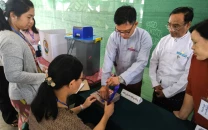

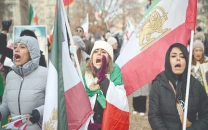
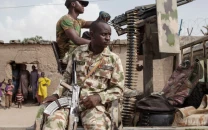
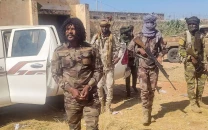
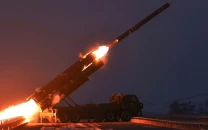












COMMENTS
Comments are moderated and generally will be posted if they are on-topic and not abusive.
For more information, please see our Comments FAQ